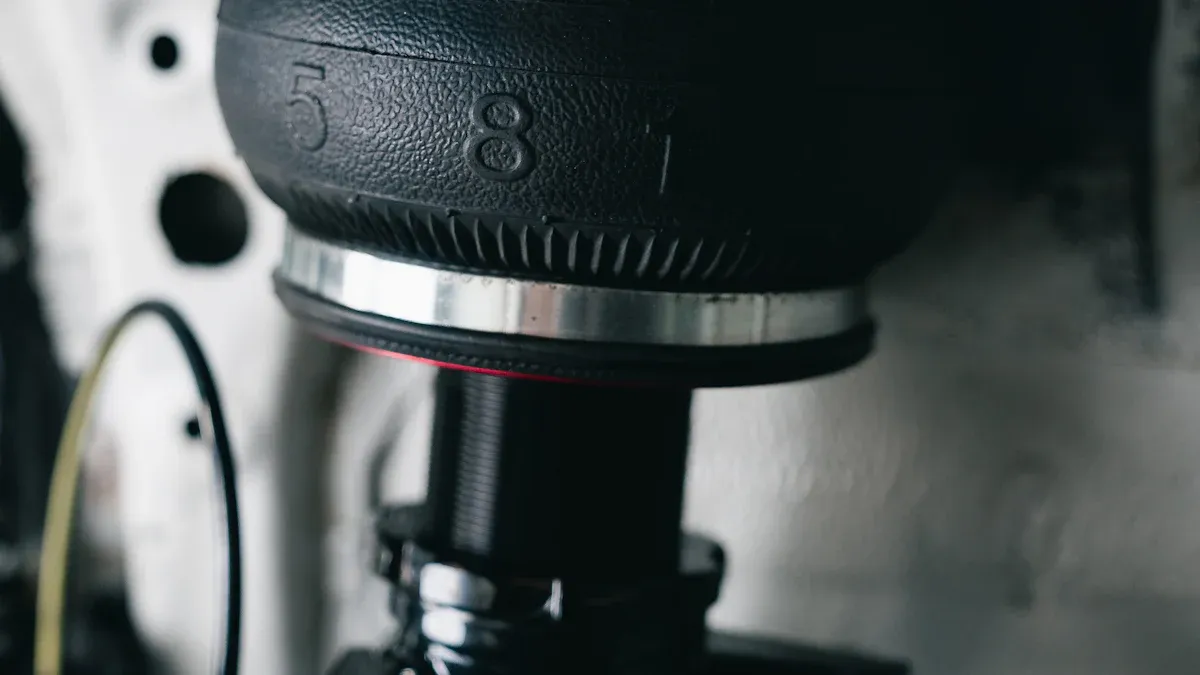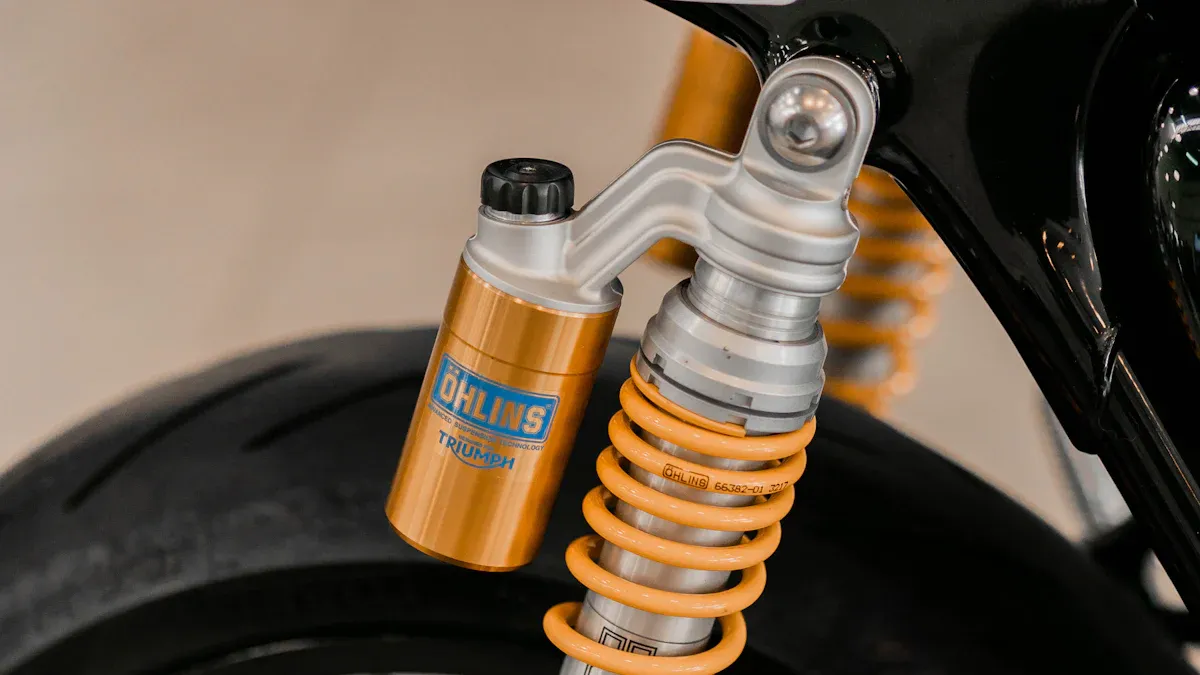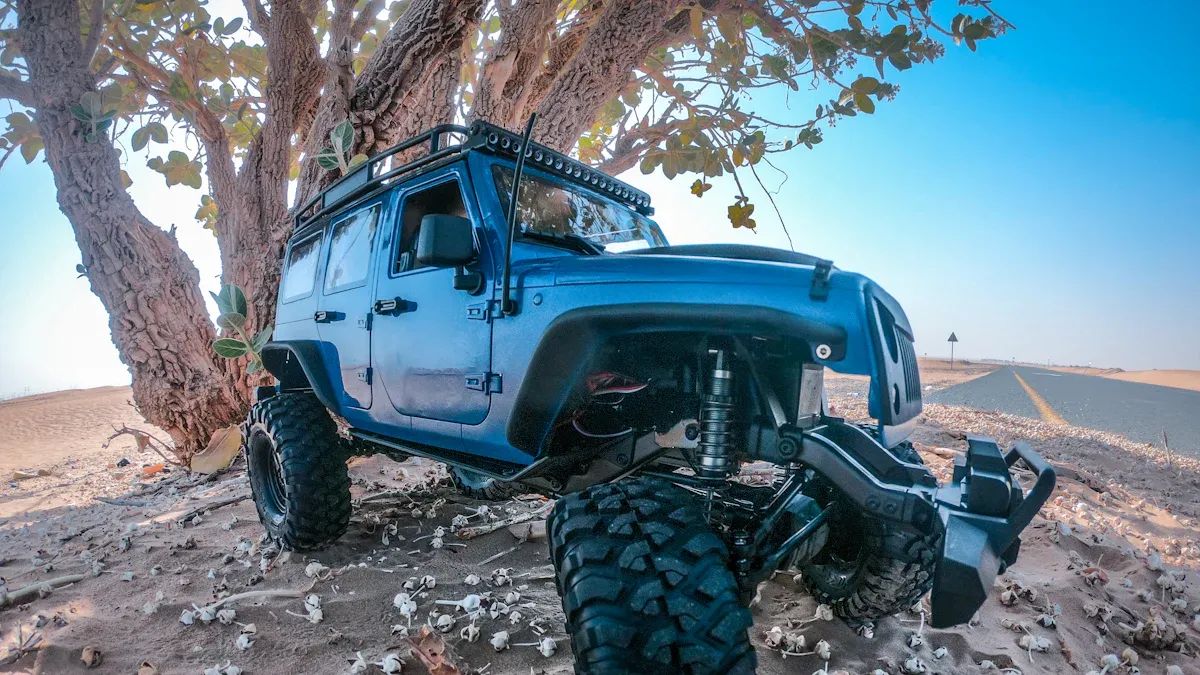
You can significantly improve your vehicle’s performance with a high-quality shock absorber spacer. This essential component enhances your ride quality by increasing ground clearance, which is crucial for off-road and uneven surfaces. The added height allows your suspension system to absorb larger bumps and impacts more effectively. This prevents the vehicle from bottoming out, providing you with a smoother, more controlled, and comfortable drive, especially on rough terrain. The primary benefit is creating more space for the suspension to travel, which is the key to a superior ride on any challenging surface.
What Exactly Is a Shock Absorber Spacer and How Does It Work?

You might wonder what this component actually is. A shock absorber spacer is a simple yet effective part designed to lift your vehicle’s body. It provides a straightforward way to increase your ground clearance without replacing your entire suspension system. Manufacturers create these spacers from various materials, each with unique properties.
Defining the Spacer: A Simple Solution for Lift
A spacer is a precisely engineered disc or block. You install it on top of your strut assembly. This simple addition physically raises the vehicle’s chassis away from the axle. Spacers come in different materials, and choosing the right one is important for performance and durability.
Pro Tip: The material of your spacer affects ride quality and longevity. Metal offers durability, while polyurethane provides a balance of strength and vibration absorption.
| Material | Properties |
|---|---|
| Aluminum | Very durable and does not compress, ensuring a consistent lift height. |
| Polyurethane | Offers a great balance. It is stronger than rubber and dampens more vibration than metal. |
| Steel | Extremely strong and ideal for heavy-duty use, but it is heavier and needs coating to prevent rust. |
The Mechanics of Increasing Suspension Travel
The spacer works by altering your vehicle’s stock geometry. When you place the spacer between the top of your strut and the vehicle’s frame, you effectively lengthen the entire strut assembly. This pushes the vehicle’s body upward. The result is more vertical space between the tire and the fender. This extra room allows your suspension to compress further when you hit a bump, preventing it from hitting its limit and “bottoming out.”
Spacers vs. Full Lift Kits: A Cost-Effective Alternative
You have several options for lifting your vehicle. Full lift kits are comprehensive but can be expensive and complex to install. Spacers offer a cost-effective alternative that delivers excellent results. You can typically find spacers that provide a lift ranging from 1 to 4 inches. An interesting fact about spacers is that their height does not always equal the final lift amount. Due to suspension geometry, a 1.5-inch spacer can often provide about 2 inches of actual lift. This makes them an efficient solution for gaining clearance and achieving a smoother ride.
Enhancing Ride Quality: The Role of Increased Suspension Travel
You gain a significant advantage when you increase your vehicle’s suspension travel. This extra space is the key to unlocking a better ride. It allows your vehicle to handle bumps and dips with greater ease. The result is a driving experience that feels more controlled, stable, and comfortable, no matter the road conditions.
How Spacers Prevent Suspension Bottoming Out
You may have felt a harsh jolt or heard a loud bang when driving over a large pothole. This jarring impact is called “bottoming out.” It happens when your suspension compresses to its absolute limit, causing the frame to hit the axle. This not only creates an uncomfortable ride but can also damage your vehicle’s components over time. Several factors can cause your suspension to bottom out.
- Your vehicle might be overloaded beyond its cargo capacity.
- The springs could be too tight, which restricts their ability to travel.
- Your bushings might be worn out or lack proper lubrication.
- The vehicle’s ride height may be set incorrectly for its typical load.
A shock absorber spacer provides a direct solution to this problem. By lifting the vehicle’s body, the spacer creates more vertical distance for the suspension components to travel. This added room means your shocks and springs can absorb much larger impacts before they reach their physical limit. You effectively give your vehicle the breathing room it needs to soak up bumps, preventing that harsh bottoming-out sensation and protecting your vehicle from damage.
Achieving a Smoother Ride on Rough Terrain
Driving on uneven roads, gravel paths, or off-road trails can be an uncomfortable, bumpy experience. Every rock and rut can send a shockwave through the cabin. Increased suspension travel directly translates to a smoother ride on these challenging surfaces. With more room to move, your wheels can drop into dips and rise over bumps while the vehicle’s body remains relatively stable and level.
This improvement comes from the spacer allowing your shocks to do their job more effectively. Instead of transferring impacts to you and your passengers, the system absorbs that energy. Many drivers notice a significant improvement in ride quality after a proper installation.
Real-World Results: One driver noted their truck rode just as smoothly as stock after installing spacers, preferring the feel over other expensive suspension modifications. The key to a great ride is often in the details of the installation. Experts point out that for the best results, you should ensure the bump stops are correctly positioned after the lift. This prevents the shock from bottoming out internally, which is crucial for achieving a smooth ride and ensuring the long life of your components.
By giving your vehicle this extra clearance and travel, you transform how it handles rough terrain. You will feel more confident and comfortable behind the wheel, turning a jarring commute into a smooth cruise.
Boosting Performance with Added Clearance and Stability

A shock absorber spacer does more than just lift your vehicle. You unlock a new level of capability and performance. The added height directly improves your vehicle’s ability to tackle tough environments. It also gives you the option to install larger tires for superior grip and stability.
Improving Off-Road Capability with Greater Ground Clearance
When you venture off the main road, ground clearance is your best friend. It is the distance between the lowest point of your vehicle and the ground. A spacer increases this distance. This means you can drive over rocks, logs, and deep ruts without scraping your vehicle’s undercarriage. This added height significantly improves your vehicle’s geometry for navigating obstacles. You gain better clearance angles, which are critical for off-roading.
- Approach angle: This is the steepest hill your vehicle’s front can climb without the bumper hitting the ground.
- Departure angle: This is the steepest slope your vehicle can descend without the rear bumper dragging.
- Breakover angle: This measures the sharpest peak you can drive over without getting the middle of your vehicle stuck.
These angles are not just numbers. They determine your vehicle’s ability to conquer steep inclines and large boulders. A higher lift from a spacer improves all three angles. You can confidently take on more challenging trails that a stock vehicle could not handle.
Off-Road Advantage: 🗺️ With improved clearance angles, you can navigate terrain that would otherwise be impassable. You reduce the risk of expensive damage to your bumpers, exhaust, and drivetrain components.
Accommodating Larger Tires for Better Traction
One of the most popular reasons you might install a spacer is to fit larger tires. The lift creates the necessary space in your wheel wells to prevent the tires from rubbing against the fender or suspension parts. Larger tires offer significant benefits for both ride quality and traction. Tires with taller sidewalls have more flexible rubber between the wheel and the tread. This flexibility allows the tire to act as an additional shock absorber.
This table shows you the difference a taller sidewall makes:
| Feature | Low-profile tires | Taller sidewalls |
|---|---|---|
| Ride Comfort | Less cushioning over potholes and cracks | Softer ride, better shock absorption |
| Handling | Sharper handling, sportier look | Less sporty handling |
The taller sidewall soaks up small bumps and road imperfections, giving you a much smoother ride. A larger tire often has a wider footprint as well. This increases the amount of rubber touching the ground, which improves your traction. This enhanced grip boosts your vehicle’s overall performance, especially in challenging conditions.
For example, look at what a 2-inch lift allows for a popular truck like the Toyota Tacoma:
- You can fit 265/75/16 tires with no rubbing issues, even when off-roading. These are a great all-around choice.
- You can upgrade to 285/70/17 tires. With proper tuning, you can maintain fuel economy and braking power.
- For maximum off-road use, you can even fit aggressive 285/75/16 tires. This size may require some minor trimming to prevent rubbing during extreme suspension movement.
By installing a spacer, you open the door to these tire upgrades. You get a more capable and comfortable vehicle ready for any adventure.
Key Considerations Before Installing Your Shock Spacer
You should know that installing a shock absorber spacer is a significant modification. It is important to understand a few key factors before you begin. Proper planning ensures you get the performance benefits you want without creating new problems. Considering the impact on your vehicle’s geometry, material choice, and installation method will lead to a successful upgrade.
Impact on Suspension Geometry and Handling
Lifting your vehicle raises its center of gravity, which can affect handling. The spacer also changes your stock suspension geometry. This modification alters the angles of your ball joints. The new angles can cause these parts to wear out faster. It may also lead to a condition called “bump steer.” This is where your vehicle might track wildly or unpredictably when you brake hard, as the wheels can toe out significantly. A proper wheel alignment after installation is essential to correct these changes as much as possible.
Choosing the Right Spacer Material and Size
You have several material options, and your choice matters for ride quality and durability.
- Polyurethane: This material is an excellent choice. It reduces noise and vibration by acting as a cushion. High-quality polyurethane is very durable and resists heat and oil. In one test, a polyurethane spacer showed no wear after 200,000 miles of use.
- Steel and Aluminum: These metal spacers are extremely strong and do not compress. They help maintain a factory-like ride quality.
When selecting a size, you should consider a few points to avoid issues like tire rub:
- Your specific vehicle model.
- The width of your tires.
- The final look or offset you want to achieve.
Professional Installation vs. DIY
You can choose to install spacers yourself if you have the right tools and experience. A DIY installation requires specific tools, including a torque wrench, a breaker bar, and various metric sockets (like 12mm, 17mm, and 22mm). You may also need specialized hex sockets for stubborn bolts.
Pro Tip: ⚠️ Avoid common DIY mistakes. Always use high-quality parts, as cheap spacers can crack under stress. You must also use the correct extended-length bolts to ensure your wheels are secure. If you are not confident, a professional installation is the safest choice to guarantee everything is done correctly.
A shock absorber spacer directly improves your ride by increasing suspension travel and ground clearance. You get a proven, cost-effective solution to prevent bottoming out and improve off-road performance. This modification also allows you to fit larger tires for better traction.
Key Takeaway: With the right product and proper installation, you can significantly upgrade your vehicle’s comfort and capability for any adventure. This ensures you get a smoother, more controlled experience on and off the road.
FAQ
Do spacers wear out my shocks faster?
No, a high-quality spacer does not cause extra wear on your shocks. Proper installation is key. You must ensure the bump stops are correctly positioned. This prevents the shock from over-compressing, which protects it from damage and ensures a long service life for your suspension components.
Will I need a wheel alignment after installation?
Yes, you absolutely need a wheel alignment. Installing a spacer changes your vehicle’s suspension geometry, affecting angles like camber and toe. An alignment corrects these angles. This step is essential to prevent uneven tire wear, ensure proper handling, and maintain your vehicle’s safety on the road.
Can I install spacers on both the front and rear?
You can install spacers on both the front and rear suspension. Many drivers do this to achieve a comprehensive lift. You can also use a front spacer alone to level your truck’s factory rake. You should select the correct size for each axle to achieve your desired stance.
How much lift can I safely get from a spacer?
You can typically achieve a lift between 1 and 4 inches safely. Going beyond this range can put excessive strain on other components like ball joints and CV axles.
Safety Tip: ⚙️ Always choose a lift height that is appropriate for your specific vehicle model to avoid compromising its handling and long-term reliability.
